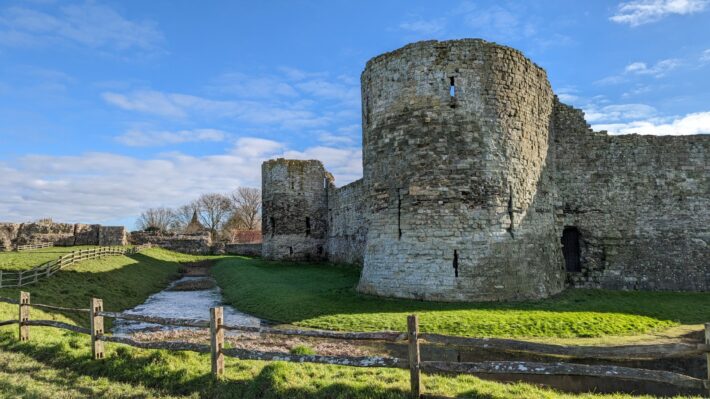British Architectural History 1 – An Introduction
Categories: British Architectural History
The history of British architecture is a fascinating subject and one that is as relevant to contemporary architects as it is to historians.
The present is dependent on the past, the knowledge and repertoire of styles we are in possession of today have been accumulated over hundreds of years. In this blog series, we will be taking a look at some of the most significant periods of architectural history and their impacts on modern designs.
The Art of Architecture
Architecture is a scientific art, an artistic science. It combines knowledge of geometry, mathematics and the strength of materials, with stylistic form and beauty.
More than simply a structure of function, a shelter from the elements which needs to be practical to live and work within, buildings have evolved over the centuries to become places that evoke feeling, they affect both our mental and physical well-being. Buildings have the ability to shape the lives of all those who inhabit them, to influence those who experience and live amongst them.
We have a reciprocal relationship with the architecture of buildings, they affect us and in turn, our lives affect them. Humanity constantly evolves; the way we live, our economies, culture, religion, politics and science. Architecture evolves alongside us to reflect these continual changes. Architectural history and social history are integrally interconnected, they exist together. Architecture cannot be removed from the framework of place and time; a building cannot be looked at in isolation, it is a product of its age and location. Buildings are created in response to a person’s or a community’s needs, the inspiration for the design is affected by a range of varying factors, including the ideologies, fashion, and technology of the age, along with the climate, local geology and geographical setting.

The Normans landed at Pevensey in 1066 and swiftly built a castle within the remains of a Roman fort. The arrival of the Normans marked the start of Medieval Britain, a period which saw significant changes, especially in architecture.
From the days of rudimentary huts protecting all those within from weather and wild animals, to the medieval age of magnificent cathedrals and castles, and later to the great country manor houses funded by royal connections or trade, and then to the urban housing, factories and railways of the Industrial Revolution, the architectural history of this country is fascinating and varied. And the influence, whether consciously or not, impacts the way we live, think and design. The Orders of Classical architecture originating in the ancient civilisations of Greece and Rome introduced to Britain in the Renaissance, still influence the form of buildings, with classic revival styles continually popular. The technological advances and experimental masons of the Romanesque and Gothic eras led to our ability to construct expansive structures and the decorative features of this time are used in Gothic revival schemes. The development of materials such as cast iron, lightweight steel and reinforced concrete in the Industrial Revolution ultimately allow us to reach great heights and create the towering buildings we do today.
The Architecture of Britain
British history can be simplistically categorised into the following time periods;
- Prehistory = Prior to AD43. The time before written records, includes the stone, bronze and iron ages. Structures from this era are elementary and surviving examples are extremely rare.
- Roman Empire = AD43 – 410. Britain was invaded by the Romans in the 1st Century AD. The legacy of the Romans’ advanced architectural technologies can be seen throughout Britain in the remaining forts, walls, aqueducts and baths, which were built in stone and have lasted nearly 2,000 years.
- Middle Ages = 410 – 1485. The Dark Ages was approximately 410-1066, so called due to the scarcity of written sources from this time. It lasted from the fall of the Roman Empire until the invasion of the Normans at the Battle of Hastings in 1066. The Medieval period begins after this time and spanned until the Tudors gained power. The Medieval era is a significant time in history, architecturally speaking, as this is when, it can be argued, the architecture of Britain really begins, with Romanesque (or Norman) and Gothic structures (mostly cathedrals and churches) which can still be seen throughout the country today.
- Tudor = 1485 – 1603. The rise of the Tudor dynasty began at the Battle of Bosworth in 1485 and lasted until the end of Queen Elizabeth I’s reign. The Reformation of English religion and the resulting dissolution of the monasteries had a huge social effect, and therefore also an impact on architecture. Buildings of this period are epitomised by the timber frame houses found up and down the country, but also include famous English country houses.
- Stuarts = 1603 -1714. This period includes Jacobean, Commonwealth and Restoration eras. Britain had fully entered the Renaissance style by this point, which looks back to the Classical architecture of Ancient Greece and Rome.
- Georgian = 1714 – 1837. Georgian and Regency architecture flourished, with neoclassical, Palladian designs dominating. New terraced townhouses in crescents and squares are one of the period’s most noteworthy architectural legacies.
- Victorian = 1837 – 1901. Gothic Revival, Arts and Crafts, Italianate; Victorian architecture varied significantly in style and can be seen in domestic, civic and ecclesiastical buildings that still dominate many towns and cities in Britain. Technological developments, including the arrival of the railway, had a transformative effect on the landscape.
- 20th Century = Art Deco, Modernism, Mid-Century and more. The 100 years up to the millennium featured a diverse architectural scene that looked onward to the future, incorporating advanced materials and construction methods.
Each of these eras produced particular types of architecture, but of course, it took time for styles to spread through the country. Transitional periods occurred, evolving from one phase to the next merging elements from previous styles, and in some cases applying the latest fashions to facades over the older structure beneath. So, whilst it is convenient for our purposes to make the above distinctions, the actual process was more gradual and complex than suggested.

Comments are closed.